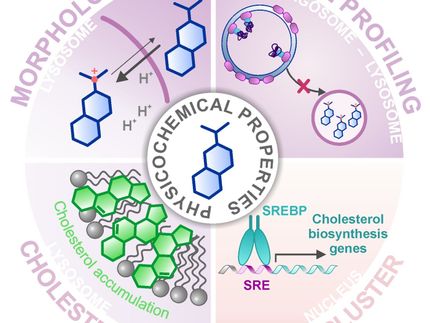Predicting the mode of action of new anti-cancer drugs with AI
Acceleration of the development of new cancer drugs
Advertisement
Plants, fungi and bacteria produce a variety of active substances that alter cell metabolism, sometimes to the point of cell death. This makes them promising candidates for new drugs against cancer and other diseases. Although a diverse range of bioactives exists, the further development of new anti-cancer drugs is proving difficult, because of the very time-consuming and expensive elucidation of their mode of action. Scientists from the Leibniz Institute of Plant Biochemistry and partners at the Martin Luther University Halle-Wittenberg and the University of Dhofar (Oman) have now taken a major step towards overcoming this hurdle in the future. With their modern analysis of cellular metabolites and AI-based evaluation, they have successfully predicted the mode of action of new anti-cancer drugs. Their study has been published in the journal Advanced Science.
Cancer cells are characterized by uncontrolled cell divisions, which are made possible by an extremely high cell and energy metabolism. The ongoing, excessive formation of new cells constantly requires sufficient DNA building blocks and fats for new cell membranes. This abnormal upregulation of the central metabolic pathways distinguishes malignant cells from normal cells and is therefore a good target for therapeutics. Most established anti-cancer drugs directly or indirectly influence the hyperactive tumor metabolism, which consequently leads to the death of the proliferating cells. Anti-cancer drugs can, for example, block the uptake of sugar into the cells or inhibit certain enzymes that are needed to generate energy or to produce fatty acids. As every cell division is preceded by a duplication of the genetic material, blocking DNA biosynthesis and cell division itself is also a good target for anti-cancer agents.
Specifically, the various tumor inhibitors - depending on the bioactive compound used - render cancer cells unable to form sufficient amounts of certain metabolic intermediates. In their entirety, these tumor cell metabolites form a very specific pattern or metabolite profile. Mass spectrometric methods, for example, allow for the survey of metabolite profiles also known as metabolomics. According to the scientists' hypothesis, active substances that attack the same target proteins in the cancer cells will also produce similar metabolite profiles. To test this, they applied 38 different cytotoxic substances - including some currently used anti-cancer drugs with already known modes of action - to prostate cancer cells and then recorded the metabolite profiles of the treated cells.
In this way, they indeed found that tumor inhibitors with the same mechanisms of action produce similar metabolite profiles and were able to assign the metabolite patterns of the treated tumor cells to the tested cancer drugs. These correlations between a drug’s mode of action and its metabolic fingerprint in treated cancer cells were used as training data for AI. Afterwards, the Halle scientists applied new natural plant substances with proven anti-cancer properties to the prostate cancer cells to determine the corresponding metabolite profiles.
With the help of machine learning, they were able to reliably predict the mode of action of the new bioactive compounds. For example, triterpenes such as 11-keto-β-boswellic acid from frankincense, maslinic acid as a component of olive oil and betulinic acid from birch bark block the energy metabolism of cancer cells and thus kill them. The AI predictions from the sample training of the prostate cancer model were then also tested on breast cancer and Ewing's sarcoma cell models, where they also provided good, albeit less accurate, predictions, as the AI was not trained on these cell types.
This combination of metabolomics and AI is an excellent method to better predict the mode of action of cytotoxic natural substances and thus accelerate the development of new cancer drugs, the scientists conclude. The new method may also provide a more precise understanding the mode of action of already used chemotherapeutic agents and for uncovering any unknown physiological effects or interactions with other drugs. This is particularly helpful for the use of various antitumor agents in combination chemotherapy. The predictive power of this approach will be further improved by increasing the number of training sets and extending it to other training drugs and other cancer cell types.
Original publication
Mohamad Saoud, Jan Grau, Robert Rennert, Thomas Mueller, Mohammad Yousefi, Mehdi D. Davari, Bettina Hause, René Csuk, Luay Rashan, Ivo Grosse, Alain Tissier, Ludger A. Wessjohann, Gerd U. Balcke; "Advancing Anticancer Drug Discovery: Leveraging Metabolomics and Machine Learning for Mode of Action Prediction by Pattern Recognition"; Advanced Science, 2024-10-21



















































